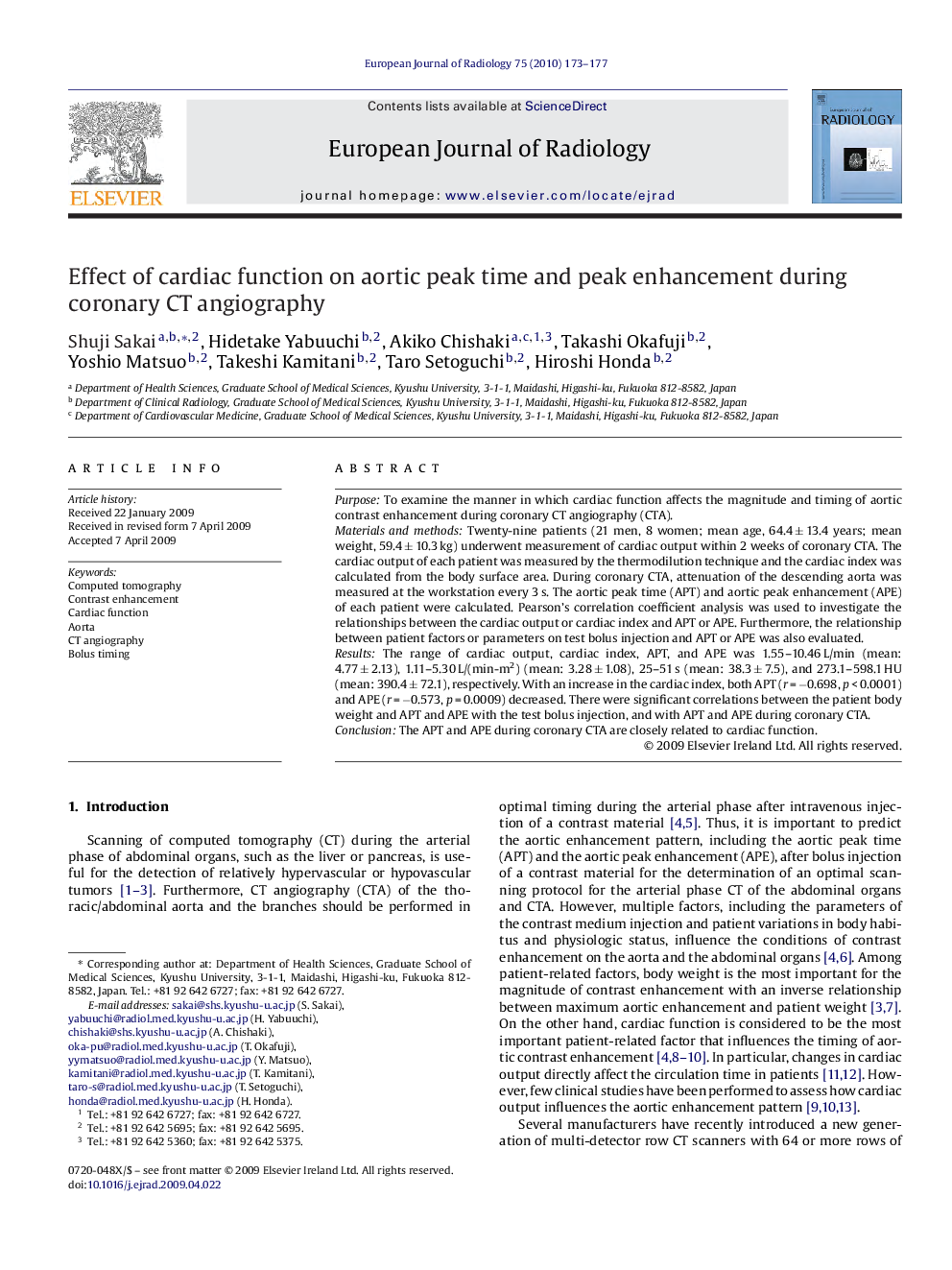| Article ID | Journal | Published Year | Pages | File Type |
|---|---|---|---|---|
| 4226954 | European Journal of Radiology | 2010 | 5 Pages |
PurposeTo examine the manner in which cardiac function affects the magnitude and timing of aortic contrast enhancement during coronary CT angiography (CTA).Materials and methodsTwenty-nine patients (21 men, 8 women; mean age, 64.4 ± 13.4 years; mean weight, 59.4 ± 10.3 kg) underwent measurement of cardiac output within 2 weeks of coronary CTA. The cardiac output of each patient was measured by the thermodilution technique and the cardiac index was calculated from the body surface area. During coronary CTA, attenuation of the descending aorta was measured at the workstation every 3 s. The aortic peak time (APT) and aortic peak enhancement (APE) of each patient were calculated. Pearson's correlation coefficient analysis was used to investigate the relationships between the cardiac output or cardiac index and APT or APE. Furthermore, the relationship between patient factors or parameters on test bolus injection and APT or APE was also evaluated.ResultsThe range of cardiac output, cardiac index, APT, and APE was 1.55–10.46 L/min (mean: 4.77 ± 2.13), 1.11–5.30 L/(min-m2) (mean: 3.28 ± 1.08), 25–51 s (mean: 38.3 ± 7.5), and 273.1–598.1 HU (mean: 390.4 ± 72.1), respectively. With an increase in the cardiac index, both APT (r = −0.698, p < 0.0001) and APE (r = −0.573, p = 0.0009) decreased. There were significant correlations between the patient body weight and APT and APE with the test bolus injection, and with APT and APE during coronary CTA.ConclusionThe APT and APE during coronary CTA are closely related to cardiac function.
